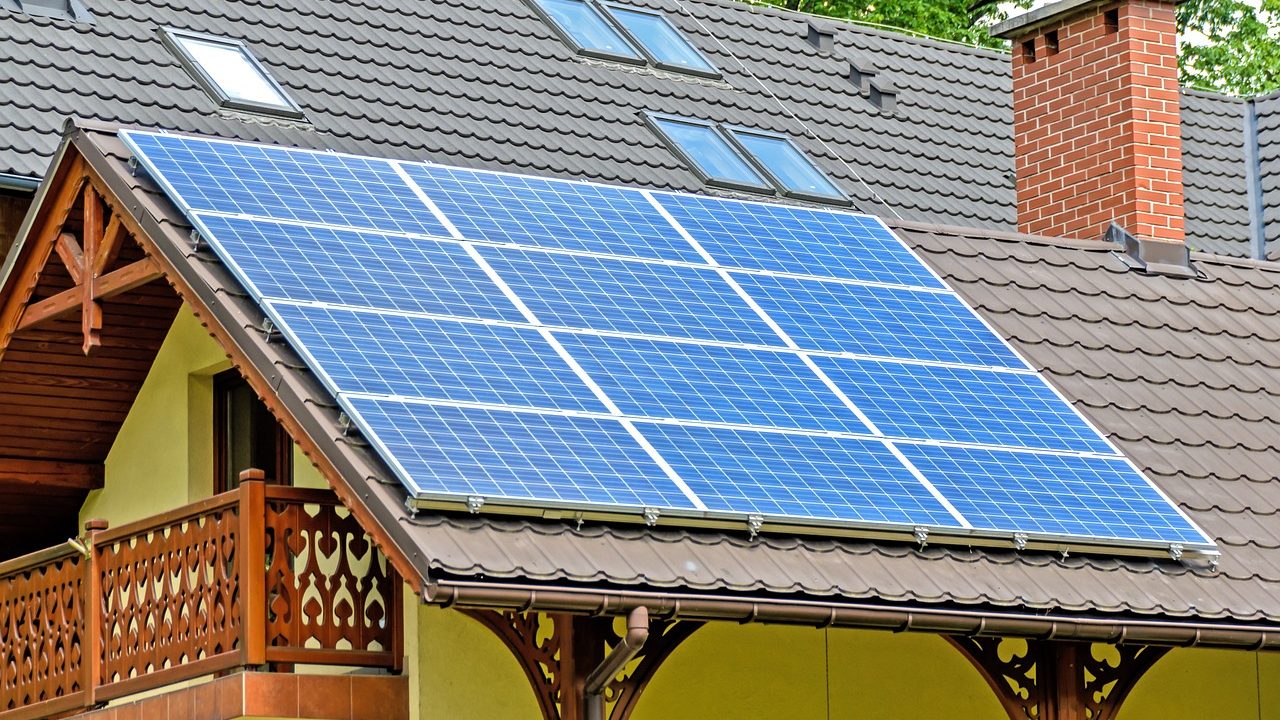Anúncios

Solar panel cost can vary widely based on several factors including location, system size, and installation specifics. Understanding these costs and the potential savings is crucial for homeowners considering solar power.
Factors Affecting Solar Panel Cost
When considering the installation of solar panels, it’s crucial to understand the various factors that influence the overall cost. These factors can significantly impact the final price and the return on investment (ROI) for homeowners.
1. Equipment Costs:
- Solar Panels: The core component of any solar system, panel costs vary depending on their efficiency, brand, and technology (monocrystalline vs. polycrystalline). Higher efficiency panels tend to be more expensive but offer better performance.
- Inverter: This essential device converts the direct current (DC) produced by solar panels into alternating current (AC) used by home appliances. Prices vary based on the type and capacity of the inverter.
- Mounting and Racking: These structures support the panels on your roof or property. Costs depend on the type of installation and the complexity of the mounting system.
2. Installation Costs:
- Labor: Professional installation ensures proper setup and system efficiency. Labor costs can vary significantly based on location, complexity of the installation, and the installer’s experience.
- Permits and Inspections: Required by local authorities to ensure the system meets all safety and regulatory standards. These can add to the overall cost but are essential for a legally compliant installation.
3. Location:
- Geographic Variations: Solar panel costs can differ by region due to differences in labor costs, local incentives, and solar irradiance levels.
- State and Local Incentives: Many states offer rebates and incentives that can significantly reduce the upfront cost of solar panels. For instance, California’s Solar Initiative provides substantial rebates for residential solar systems.
4. System Size:
- Larger systems have higher upfront costs but can offer better economies of scale. The overall price per watt typically decreases as the system size increases, leading to greater long-term savings.
Solar Panel Cost Average
Understanding the average cost of solar panels helps in making an informed decision. These averages can provide a baseline for budgeting and financial planning.
1. National Averages:
- The average cost of installing a solar panel system in the United States ranges from $15,000 to $25,000 for a standard 5kW system. This price includes equipment, labor, permits, and other associated costs.
2. Per Watt Costs:
- Solar panel systems are often priced based on their capacity, measured in watts. On average, the cost per watt in the U.S. is between $2.50 and $3.50. For example, a 5kW system at $3 per watt would cost approximately $15,000.
3. Detailed Cost Breakdown:
- Solar Panels: The panels themselves typically account for about 30% of the total system cost.
- Inverters: These make up around 10% of the overall cost, with prices varying based on type and capacity.
- Mounting and Racking: These components can add another 10% to the total cost, depending on the installation type and complexity.
- Labor and Installation: Professional labor costs usually represent about 15-20% of the total system cost.
- Permits and Inspections: These administrative costs can account for 5-10% of the total cost.
Cost Breakdown of Solar Panel Installation
Investing in solar panels involves several cost components that collectively determine the total price of installation. Here’s a detailed look at what contributes to the cost:
- Solar Panels:
- Cost Range: $2,000 – $10,000
- Description: These are the primary components of the system, converting sunlight into electricity. The price varies based on the type of panels (monocrystalline, polycrystalline, or thin-film) and their efficiency.
- Inverter:
- Cost Range: $1,000 – $3,000
- Description: Essential for converting the DC electricity generated by the panels into AC electricity used by home appliances. Options include string inverters, microinverters, and power optimizers.
- Mounting and Racking:
- Cost Range: $500 – $3,000
- Description: These structures secure the panels to your roof or ground setup. The cost can vary depending on the complexity of your roof or the type of mounting system used.
- Balance of System (BOS) Components:
- Cost Range: $500 – $2,000
- Description: Includes wiring, switches, and electrical accessories necessary for the installation.
- Labor and Permits:
- Cost Range: $3,000 – $10,000
- Description: Professional installation services ensure that the system is correctly set up and compliant with local regulations. This includes the cost of permits required by local authorities.
- Monitoring Systems:
- Cost Range: $200 – $1,000
- Description: Optional systems that track your system’s performance in real-time, helping you maximize efficiency.
Total Average Cost: The total installation cost can range from $15,000 to $25,000 for a typical residential system. This price range can fluctuate based on the size of the system, your geographic location, and specific installation requirements.
Incentives and Rebates
One of the most compelling reasons to invest in solar energy is the availability of various incentives and rebates that significantly reduce the overall cost. Here’s an overview of key incentives:
- Federal Tax Credit:
- Details: The federal government offers a solar Investment Tax Credit (ITC), which allows homeowners to deduct 26% of the cost of installing a solar energy system from their federal taxes.
- Example: For a $20,000 solar system, the federal tax credit can reduce the cost by $5,200, bringing the price down to $14,800.
- State Incentives:
- Description: Many states offer additional incentives, including tax credits, rebates, and performance-based incentives.
- Examples:
- California: The state offers rebates through programs like the California Solar Initiative.
- New York: Provides rebates and tax credits through the NY-Sun Initiative.
- Local Utility Rebates:
- Description: Some utility companies offer rebates to customers who install solar panels.
- Examples: These rebates can range from a few hundred to several thousand dollars, depending on the utility provider and the size of the system.
- Net Metering:
- Details: This policy allows homeowners to sell excess electricity generated by their solar panels back to the grid, often at the same rate that they purchase electricity.
- Benefit: This can significantly offset your energy costs, further improving the return on investment.
- Solar Renewable Energy Certificates (SRECs):
- Details: Homeowners can earn SRECs for the electricity their systems produce and sell these certificates to utility companies to meet renewable energy mandates.
- Benefit: This can provide an additional income stream, further enhancing the financial benefits of going solar.
Long-Term Savings and ROI
Investing in solar panels offers substantial long-term financial benefits, making it an attractive option for homeowners looking to reduce energy costs and increase property value. The primary advantage of solar panels is the significant reduction in monthly electricity bills. Depending on the size of the solar system and the amount of sunlight your location receives, you can save a considerable amount of money each month.
Energy Bill Savings
- Homeowners can save between $600 and $1,500 annually on electricity bills.
- Over 25 to 30 years, these savings can add up to tens of thousands of dollars.
- In areas with high electricity rates, savings can be even more substantial.
Increased Home Value
- Solar panel systems often increase property value.
- Studies show homes with solar panels can increase in value by up to 4%.
- This increase is particularly beneficial in competitive real estate markets.
Payback Period
- The payback period is the time it takes for energy savings to equal the initial investment.
- On average, the payback period ranges from 5 to 8 years.
- After the payback period, the system essentially provides free electricity for its remaining lifespan.
Environmental Impact
- Solar panels help reduce your carbon footprint.
- Using renewable energy decreases reliance on fossil fuels.
- Helps combat climate change and reduce greenhouse gas emissions.
Financing Options for Solar Panels
Several financing options are available to make the initial investment in solar panels more accessible and affordable.
Solar Loans
- Spread the cost over several years with competitive interest rates and flexible terms.
- Monthly payments are typically lower than previous electricity bills.
- A popular and attractive financing method for many homeowners.
Leases and Power Purchase Agreements (PPAs)
- A third party owns the system, and you pay for the electricity generated.
- Significantly reduce or eliminate upfront costs.
- Solar lease: pay a fixed monthly fee.
- PPA: pay for the power generated by the system.
- Immediate savings on energy bills without the responsibility of ownership.
Cash Purchase
- Paying upfront eliminates financing costs and allows full benefit from energy savings.
- Requires significant initial investment but offers the highest return over time.
Federal and State Incentives
- Various incentives and rebates reduce installation costs.
- Federal solar tax credit: deduct 26% of the installation cost from federal taxes.
- State and local incentives provide additional savings, making solar panels more affordable.
PACE Financing
- Property Assessed Clean Energy (PACE) financing allows payment through property taxes.
- Offers long repayment terms and is tied to the property, not the individual.
Are Solar Panels Worth the Cost?
Deciding whether solar panels are worth the cost involves evaluating both financial and environmental benefits. Financially, solar panels can significantly reduce monthly electricity bills, leading to substantial long-term savings.
Many homeowners see a return on investment within 5 to 10 years, especially with the help of federal tax credits and state incentives. Additionally, solar panels can increase the resale value of your home, making them a smart investment.


